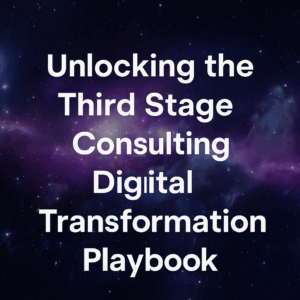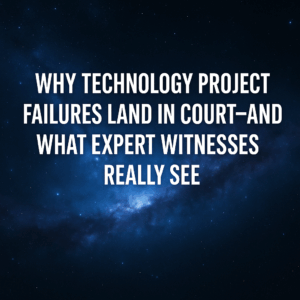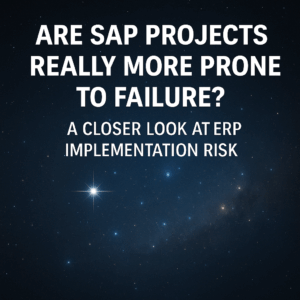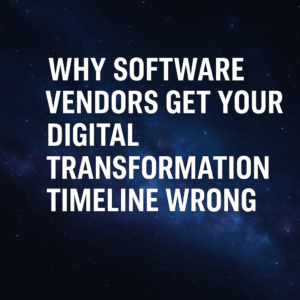In today’s dynamic business environment, the key to success lies not just in setting goals but in effectively managing and evaluating how those goals are pursued and achieved. This is where Enterprise Performance Management (EPM) comes into play. EPM, an essential field in business management, integrates various methodologies to ensure that an organization’s objectives are met efficiently and effectively.
In this blog, we will explore the concept of EPM, its technological integration, implementation strategies, impact on organizational performance, and its future outlook. Understanding EPM is vital for anyone involved in Business Strategy and Operations, as it combines elements of Strategy, Planning, Budgeting, Forecasting, and Reporting into a cohesive framework.
Table of Contents
ToggleUnderstanding EPM
Enterprise Performance Management is a comprehensive approach that aligns performance with an organization’s strategic goals. Unlike traditional management methods, EPM is not siloed; it integrates various business processes to provide a holistic view of performance.
EPM has evolved significantly over the years. Initially, it was primarily focused on financial outcomes, but it has now expanded to include non-financial aspects like customer satisfaction, internal business processes, and learning and growth opportunities.
Key Components
The key components of EPM include:
- Strategy: The strategy component of EPM is foundational, focusing on comprehending and defining the long-term goals of an organization. This stage is critical as it sets the direction for all subsequent activities and decisions. It involves a deep understanding of the organization’s mission, vision, and core values, and translating these into achievable objectives.
An effective EPM strategy not only outlines what the organization aims to achieve but also provides a clear roadmap of how to get there. This includes identifying key market opportunities, assessing competitive landscapes, and aligning internal resources and capabilities to exploit these opportunities. A well-defined strategy ensures that all organizational efforts are cohesive and directed towards common goals, thereby maximizing the chances of success in the long term.
- Planning and Budgeting: Planning and budgeting are the tactical components of EPM, where strategies are transformed into detailed, actionable plans. This phase involves the allocation of resources (financial, human, and material) in line with strategic objectives. Effective planning and budgeting require a thorough understanding of the organization’s current resources, future needs, and potential constraints. It is a collaborative process that often involves various departments working together to create a cohesive plan that aligns with the overarching strategy.
Budgeting, a critical part of this process, entails distributing financial resources in a way that maximizes efficiency and return on investment. This step is crucial for ensuring that the organization has the necessary resources to execute its plans while maintaining financial health and stability.
- Forecasting: Forecasting in EPM involves using historical data and analyzing market trends to predict future performance. This component is essential for making informed decisions and preparing for future challenges and opportunities. Effective forecasting requires a combination of data analysis, market intelligence, and experience. It allows organizations to anticipate changes in the business environment, such as shifts in consumer behavior, economic fluctuations, or new competitive threats. By doing so, businesses can proactively adjust their strategies and operations, rather than reacting to changes after they occur.
Forecasting is not just about predicting the future; it’s about creating a flexible and adaptive approach to management that allows for quick and informed decision-making in a constantly changing business landscape.
- Reporting: The reporting component of EPM involves the regular review and communication of performance against set goals and objectives. This step is vital for tracking progress, identifying areas of improvement, and making necessary adjustments to strategies and plans. Effective reporting is not merely about presenting data; it’s about providing insights and analysis that inform decision-making. It requires the collection of relevant data from various sources, its accurate and timely analysis, and its clear presentation to stakeholders.
Reporting in EPM goes beyond financial metrics, encompassing a wide range of performance indicators including operational efficiency, customer satisfaction, and employee engagement. Regular and transparent reporting ensures that all stakeholders are aligned and informed, and that the organization remains accountable for achieving its strategic objectives.
Differentiation from Traditional Practices
EPM differs from traditional management practices in its holistic approach. Traditional methods often operate in silos, with different departments using different tools and metrics. EPM, however, provides a unified view, ensuring that all parts of the organization are aligned and working towards common goals.
The integration of technology has revolutionized EPM. Modern EPM software provides businesses with tools to automate and streamline complex processes, leading to increased efficiency and accuracy.
EPM software solutions offer comprehensive tools for planning, reporting, and analysis. These systems enable real-time data analysis, improving the speed and accuracy of decision-making processes.
Benefits of Technology Integration
The key benefits include:
- Efficiency: Automated processes reduce manual labor and errors.
- Accuracy: Real-time data and advanced analytics ensure more accurate forecasting and planning.
- Informed Decision-Making: Access to detailed analytics helps in making well-informed strategic decisions.
Future Technological Trends
Looking ahead, technologies like AI, machine learning, and cloud computing are set to further enhance EPM. These advancements will allow for more sophisticated data analysis and decision-making processes, making EPM even more integral to business operations.
EPM Implementation Strategies
Implementing an EPM system requires a strategic approach. It’s not just about choosing the right software but also about aligning it with the organization’s processes and culture.
Steps for Implementation
A typical EPM implementation involves:
- Needs Assessment: The first step in EPM implementation is conducting a thorough needs assessment. This process involves a detailed analysis of the organization’s current state, including its processes, systems, and performance metrics. The aim is to understand the specific challenges and requirements of the organization in order to determine how an EPM system can best address them.
This step often involves consultations with key stakeholders across various departments to gather insights on existing pain points, goals, and expectations. It’s crucial to identify not just the financial aspects but also operational, strategic, and human resource-related needs. A comprehensive needs assessment helps in creating a clear picture of what the organization needs from an EPM system, which is critical for ensuring that the chosen solution is well-aligned with the organization’s overall objectives.
- Software Selection: Once the needs assessment is complete, the next step is selecting the appropriate EPM software. This decision should be based on the specific needs, size, and industry of the organization identified in the assessment phase. There are many EPM solutions available, each with its own set of features and capabilities. The selection process should involve a careful evaluation of these features against the organization’s requirements. For additional information on how you can ensure a successful software selection, check out our Digital Stratosphere podcast episode titled – Implementation Success Requires Good Software Selection.

Factors to consider include the software’s scalability, ease of integration with existing systems, user-friendliness, and the level of support provided by the vendor. Additionally, it’s important to consider the total cost of ownership, including not just the purchase price but also long-term costs such as maintenance and upgrades. Choosing the right software is crucial, as it will play a significant role in the success of the EPM implementation.
- Training and Adoption: After selecting the appropriate EPM software, the focus shifts to training and adoption. This phase is critical because the success of the EPM system depends largely on how well the staff understand and utilize it. Comprehensive training programs should be developed to educate employees on how to use the new system effectively. This training should be tailored to different user groups within the organization, as their interaction with the system can vary significantly.
Beyond just technical training, it’s important to foster an understanding of the value and benefits of the EPM system, to encourage buy-in and adoption. Change management strategies should also be employed to assist staff in transitioning from old processes to the new system. Proper training and support play a key role in ensuring a smooth transition and high adoption rates.
- Continuous Evaluation: The final step in EPM implementation is continuous evaluation. This involves regularly assessing the system’s effectiveness and its alignment with the organization’s objectives. Continuous evaluation helps in identifying areas where the EPM system is performing well and areas where improvements are needed. This process should include regular feedback from users, performance analytics, and benchmarking against initial objectives and industry standards.
Adjustments and updates to the system may be required based on these evaluations to ensure that the EPM system continues to meet the evolving needs of the organization. This step is an ongoing process, reflecting the fact that EPM is not a one-time project but a continuous journey towards optimizing organizational performance.
Challenges and Best Practices
Common challenges include resistance to change, data integration issues, and cost concerns. Best practices for successful implementation include:
- Engaging stakeholders throughout the process.
- Starting with a pilot program before a full rollout.
- Providing ongoing support and training to staff.
EPM and Organizational Performance
EPM has a direct and significant impact on an organization’s performance. By providing a framework for aligning day-to-day operations with strategic goals, EPM ensures that every part of the organization is working towards the same objectives.
Evolving Business Needs
As businesses evolve, so does the need for more integrated and adaptive management tools. EPM is set to become more ingrained in business strategies, fostering innovation and growth.
Enterprise Performance Management is a cornerstone of modern business strategy. Its role in aligning goals, optimizing performance, and ensuring efficient operation is unparalleled. In a world where strategic agility and data-driven decision-making are key, EPM stands out as a vital tool for businesses aiming to succeed and thrive. Embracing and enhancing EPM practices is not just beneficial; it’s imperative for any business looking to maintain a competitive edge in today’s fast-paced market.

I would enjoy brainstorming ideas with you if you are looking to strategize for an upcoming transformation or are looking at selecting an ERP system. Please feel free to contact me at eric.kimberling@thirdstage-consulting.com. I am happy to be a sounding board as you continue your digital transformation journey.





